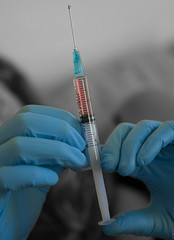 Health care is an issue that has been all over the news for quite some time now. Unfortunately the health care of the youthful and incarcerated has often been overlooked as Washington attempts to implement new programs for the voting masses.
Health care is an issue that has been all over the news for quite some time now. Unfortunately the health care of the youthful and incarcerated has often been overlooked as Washington attempts to implement new programs for the voting masses.
Not anymore. The American Academy of Pediatrics’ Committee on Adolescence has released a policy statement, the first update in a decade to the Health Care for Youth in the Juvenile Justice System. It finds that incarcerated youth are at high-risk for health issues, physical, mental and developmental. Here is the statement’s abstract for an overview:
Youth in the juvenile correctional system are a high-risk population who, in many cases, have unmet physical, developmental, and mental health needs. Multiple studies have found that some of these health issues occur at higher rates than in the general adolescent population. Although some youth in the juvenile justice system have interfaced with health care providers in their community on a regular basis, othershave had inconsistent or nonexistent care. The health needs of these youth are commonly identified when they are admitted to a juvenile custodial facility. Pediatricians and other health care providers play an important role in the care of these youth, and continuity between the community and the correctional facility is crucial. This policy statement provides an overview of the health needs of youth in the juvenile correctional system, including existing resources and standards forcare, financing of health care within correctional facilities, and evidence-based interventions. Recommendations are provided for the provision of health care services to youth in the juvenile correctionalsystem as well as specific areas for advocacy efforts. Pediatrics 2011; 128:1219–123
According to the report nearly 11 million juveniles across the nation were arrested in 2008. Not all of them suffered detention, long or short term, but the average stay behind bars for the ones who did was 65 days as of 2006. Of those in custody, 80% remained in detention for at least 30 days and 57% for at least 90 days. All of them requiring health care of some sort. Unfortunately that health care often does not appear, and when it does it is often substandard.
Ryan Schill, a writer for the Juvenile Justice Information Exchange, shares some of the policy statement author’s views on why these changes have been enacted:
‘We wanted to advocate for these youth to have the same level and standards of care as non-incarcerated youth in the community,” the report’s lead author, Dr. Paula Braverman, Director of Community Programs at the Cincinatti Children’s Hospital Medical Center said in an email. She said the Committee on Adolescence also “outlined specific recommendations which included the training and skill of the health care providers.’
All too often health care in detention facilities is administered by people with insufficient training in the subject. She also touched on a subject that we here at HumaneExposures find to be vital:
‘We also wanted to highlight some areas for advocacy,’ she said, ‘including the need for adequate levels of funding to provide for the medical, behavioral health and educational needs of these youth.’ Equally important, she said, are intervention programs in the community ‘that address the risk and protective factors related to involvement in the juvenile justice system.’
Once more we have support for the idea that intervention, rehabilitation, and education are vital pieces to the puzzle. With such a preponderance of evidence that these tactics work there is still resistance to them. Hopefully as we see more high stature organizations like The American Academy of Pediatrics weigh in on the subject we will see the needed shift in public opinion.
Image Source: Yanivba on Flickr, used under it’s Creative Commons license









